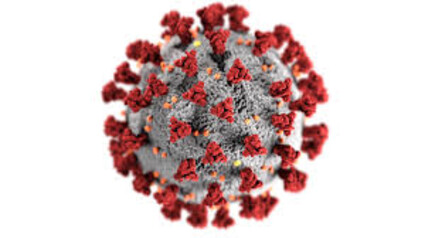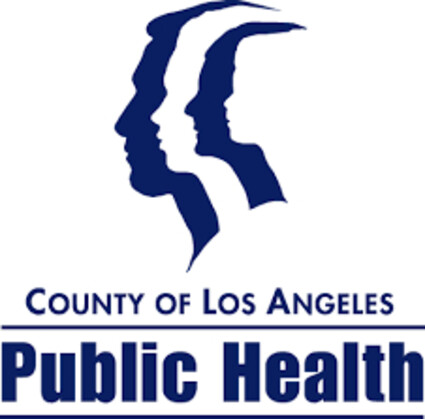COVID-19 Cases Increase
December 21, 2023

As COVID-19 Transmission Indicators Increase, Common-Sense Precautions offer Important Protection from Exposures, Transmission and Severe Illness
Three weeks after Thanksgiving, Los Angeles County is seeing an increase in indicators of COVID-19 transmission. With cases rising, new variant strains emerging, and the ongoing risk of Long COVID, residents may want to consider taking common sense precautions to limit exposures, transmission and severe illness. This includes wearing a high-filtration mask in high-risk situations, testing when symptomatic, remaining home when sick, and importantly, getting the updated COVID-19 vaccine soon.
This week, the Los Angeles County Department of Public Health (Public Health) is reporting a daily average of 430 new COVID-19 cases per day, 50 more daily cases than reported last week. Due to home tests, the results from which are not reported to Public Health, this is an undercount of the actual number of cases in the community.
Wastewater testing for concentrations of SARS-CoV-2, the virus that causes COVID-19, provides a more comprehensive picture of COVID transmission in Los Angeles County. This week, Public Health is reporting wastewater concentrations that are 38 percent of those seen last year at the peak of the winter surge. This is up from 28 percent reported last week and 12 percent reported one month ago on Nov. 15.
COVID-positive hospitalizations have also increased this past week from 462 last week to 524 this current reporting period.
Holiday gatherings, more travel and increased time spent indoors are all factors likely contributing to transmission increases. Protection against COVID-19 from previous infections and vaccines wanes over time and for this reason, the updated COVID-19 vaccine for 2023-24 is recommended for everyone ages 6 months or older, regardless of prior vaccinations or infections.
The CDC issued a Health Advisory recommending that health care providers administer influenza (flu), COVID-19 and RSV immunizations now, if recommended, given low vaccination rates coupled with ongoing increases in national and international respiratory disease activity. The Los Angeles County Department of Public Health echoes this recommendation.
In addition to protection against severe illness and hospitalization, the COVID vaccine can also protect against Long COVID. Results from a recent survey conducted by the U.S. Census Bureau, in collaboration with the National Center for Health Statistics, show that among people in California who have had a COVID-19 infection, more than one in five have had Long COVID, symptoms lasting for three months or longer. Research studies show that COVID-19 vaccination can provide protection against Long COVID.
In Los Angeles County, the proportion of cases that different strains account for has shifted over recent weeks, signaling that COVID-19 is continuing to evolve with new strains gaining dominance. The updated vaccine is formulated to provide protection for Omicron XBB strains, which are circulating now. Currently, in Los Angeles County, for specimens collected the two-week period ending Nov. 11, strains descended from XBB accounted for 95 percent of sequenced specimens. HV.1 accounted for the highest proportion, at 27 percent, followed by EG.5 at 18 percent.
As a comparison, for specimens collected during the same period in 2022, less than 5 percent of specimens were descendants of Omicron XBB. In many cases, the strains that were dominant when a person was vaccinated or infected in the past may no longer be widely circulating. The updated vaccine can renew protection against severe illness and hospitalization and ensure a person has the most needed protection this winter.
Since early November, COVID-19 hospitalizations in Los Angeles County have been steadily increasing. For the most recent week, based on data through Dec. 2, the CDC is reporting 6.3 new COVID-19 hospitalizations per 100,000 people, compared to 4.8 the week prior. The daily average of the percent of Emergency Department encounters classified as coronavirus-related is 4 percent compared to 3 percent one month ago.
The winter respiratory virus season brings the potential to stress local health care systems if transmission of COVID-19, flu and RSV all continue to increase, especially if health care workers are infected and unable to work. The updated COVID-19 vaccine, along with flu, and for those eligible, RSV vaccines, can help to lower this burden. A recent CDC advisory sent to providers urges conversations with patients on getting vaccinated, tested, and using therapeutics.

The flu vaccine, which can be administered at the same time as the COVID-19 vaccine, is recommended for people 6 months and older. People who are 60 and older should speak with their health care provider about an RSV vaccine. RSV vaccination is also recommended for people who are between 32 and 36 weeks pregnant, and RSV immunizations are available for infants under 8 months old.
If Los Angeles County residents have questions about vaccines, such as where to get vaccinated or how to get tested, the Public Health Call Center remains open seven days a week from 8 a.m. to 8 p.m. at 1-833-540-0473. Public Health staff can connect callers with resources and help people schedule vaccination appointments, including in-home vaccinations for those that are homebound. The Public Health Call Center can also be used to access free telehealth services for COVID-19, including a no-cost prescription for Paxlovid, an anti-viral medication to treat COVID-19, if eligible.


















Reader Comments(0)